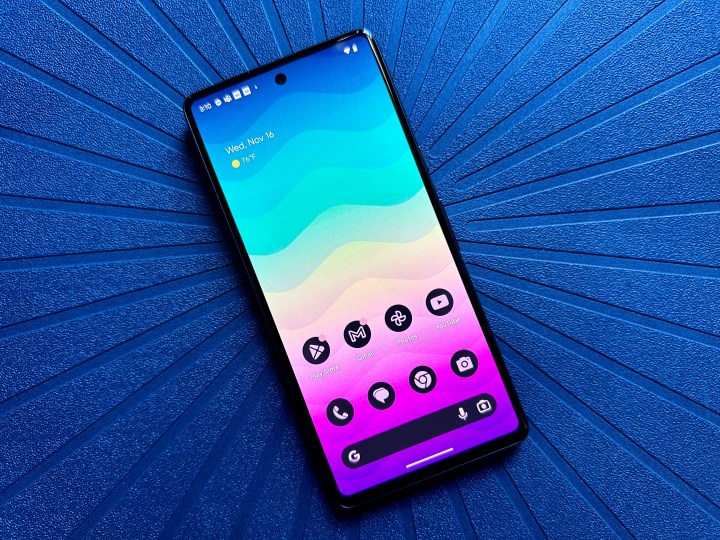With the Pixel line, Google introduced the concept of Feature Drops — small quarterly updates delivered to push quality-of-life improvements to Pixel phones. The promise is simple: your Pixel phone gets better over time. Still, Google’s approach to updates has recently left much to be desired, with most Feature Drops this year consisting of little but emoji updates and new wallpapers for most Pixel users. At the same time, improved software update timelines from other smartphone makers continue to leave Google’s promises in the dust.
Questionable decisions
While Google’s Feature Drops have gone larger on the macro scale, they have also grown more limited at the same time. The company has dedicated column space to objectively good causes and highlighted wallpapers and art by minority communities — including, people of color, women, and the LGBT community. It’s also done some fun things with the emoji kitchen app that extends the number of emoji available on Android. Feature drops also come with fantastic new features for Pixel hardware.
Simultaneously, there are times that Google does roll out genuinely useful features to Pixel phones — only to lock them to new releases like the Pixel 7 and Pixel 7 Pro. The Pixel Feature Drops can be amazing, but Pixel 6 owners are getting short shrift just a year into their purported four-five year support cycle — not to talk of the Pixel 5.
There’s also the matter of some Google Feature drops being thinly veiled advertisements. Yes, the Pixel Buds Pro and Pixel Watch are excellent devices, but Feature Drop focusing on them means nothing to someone who purchased a Pixel 6a with a Fitbit Sense 2 and a pair of Pixel Buds A.
Pixel 6 owners are getting short shrift just a year into their purported four-five year support cycle.
There are also times when Google’s rollout strategy hamstrings itself. Android Central goes into it in more detail, but to sum it up, a lot of Google’s Feature Drops are now composed of app updates, and the company has a habit of not rolling them out to everyone at once.

Potential squandered
There are good reasons for this. Some app updates may break things, and Google needs to be able to stop a rollout if possible. But it’s hard to drum up excitement for a Feature Drop when half the drops are arriving at an unspecified time. As a longtime Pixel user, I no longer check for whatever features Google is delivering in the drops. If I notice them, I notice them. Increasingly, I don’t. A new user may check it, not find it, and that’s the end of that curiosity. Many of Google’s Feature Drops fall under this “may or may not be immediately present” uncertainty.
At the same time, one can imagine an alternate world in which the Pixel team is allowed to add more useful features to Google’s version of Android. Many Android phones ship with support for running multiple app accounts for things like WhatsApp — a useful tool for businesses.
Perhaps Google could finally build a powerful Notes app for the Pixel phone. Every other smartphone has that, in addition to the more scrapbook-style Keep Notes, for example. Google has been tightening up integration between Chromebooks, and a Feature Drop that would help both Chromebooks and Windows users — say tighter Nearby Share integration — would be useful. Perhaps, even catching up to Samsung or Xiaomi could be possible.
To be clear, there are good reasons (from Google’s point of view) why the Pixel Feature Drops have gotten worse. Google has also started rolling out Android feature drops. These have more or less the same feature set as feature drops used to have. After all, there’s nothing that prevents Google from rolling out a genuinely useful feature to Android phones other than artifice. If it’s useful for the Pixel team to build it — then it’s useful enough for everyone can have it!

Finally, Feature Drops aren’t the only place that Google has dropped the ball with regard to software (and that’s leaving bugs and consistency aside). The company had focused on fast and speedy updates as a differentiator ever since the first Pixels, but Google has started falling behind there too. Keeping track of Android 12 and Android 13 updates revealed that competitors from OnePlus and Samsung are fast with updates, delivering them in just under three months to their past flagships. At the same time, Google now offers the least support time, adhering to three years of meaningful feature updates support where rivals offer at least four. Again, there may be good reasons for this, but at the end of the day, your Android phone will likely get faster, fuller updates if it isn’t from Google.
After a long period where it lagged behind on hardware, the Pixel has finally caught up and refined itself. Now, it’s time for the software to do the same.
Editors’ Recommendations
